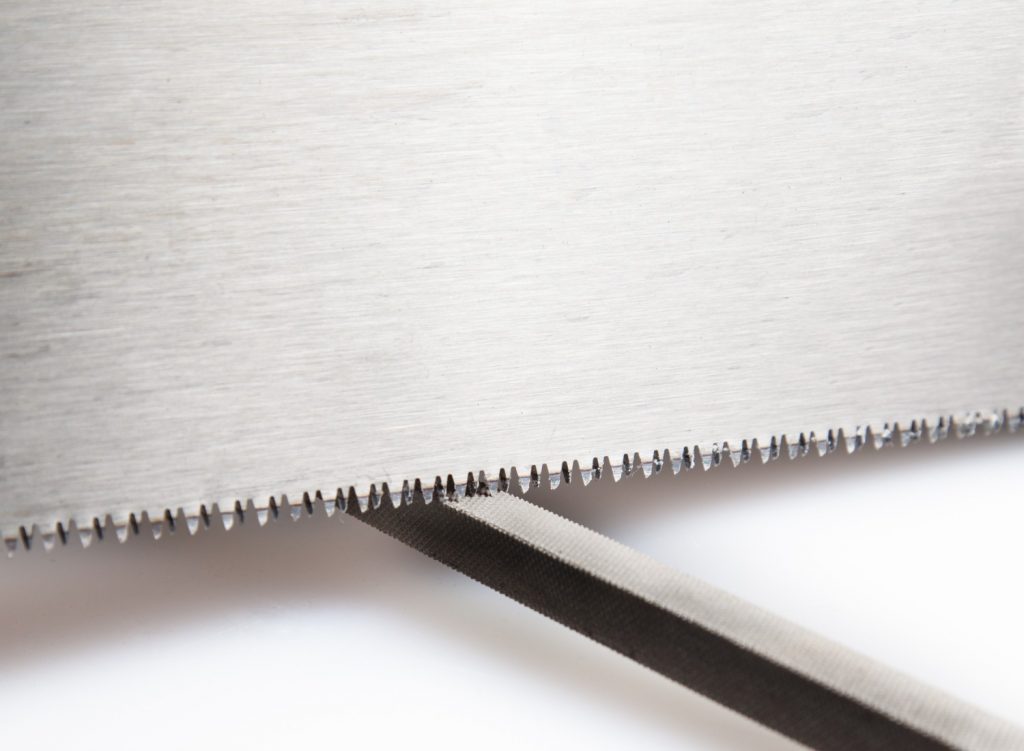How to Sharpen a Hand Saw for Optimal Woodworking

In the world of woodworking, the hand saw is a timeless and indispensable tool that allows artisans to create precision cuts with a personal touch. However, over time, even the finest hand saws can lose their edge and become less effective. The good news is that with the right knowledge and a bit of practice, you can sharpen your hand saw to restore its cutting prowess.
In this comprehensive guide, we will walk you through the steps to sharpen a hand saw and provide you with the skills needed to maintain your tool’s performance to enhance the quality of your woodworking projects.
Why Sharpen Your Hand Saw?
A sharp hand saw is the key to producing clean and accurate cuts in wood. Dull saws can lead to tear-outs, jagged edges, and inefficient work. By keeping your hand saw sharp, you’ll not only save time and effort but also improve the overall quality of your woodworking projects.
Gather Your Tools and Materials
Before you begin the sharpening process, it’s essential to gather the necessary tools and materials. Here’s what you’ll need:
- Bastard mill file: A flat file with a coarse surface, typically used for the initial filing of the saw teeth.
- Second cut mill file: A finer file that follows the coarse file to refine the tooth shape.
- Set of saw vises: These will hold your saw securely in place during sharpening.
- Safety gear: Always wear safety glasses, gloves, and ear protection when working with hand tools.
- Marker or pencil: To mark the starting point for sharpening.
- Saw set: An optional tool for adjusting the set of the teeth, allowing for cleaner cuts.
Inspect Your Hand Saw
Begin by inspecting your hand saw. Look for any damaged or missing teeth, as you may need to replace them. Ensure that the saw blade is straight and not warped. If you find any issues with the blade itself, it’s best to address them before sharpening.
Secure Your Hand Saw
To effectively sharpen your hand saw, you’ll need to secure it in a set of saw vises. These vises will hold the saw firmly in place and prevent any movement during the sharpening process. Clamp the saw horizontally to ensure it’s at a comfortable working height.
Mark the Starting Point
Before you start filing, it’s a good idea to mark the starting point for sharpening. This will help you keep track of your progress and ensure that you file each tooth consistently. Use a marker or pencil to darken one of the teeth near the handle of the saw. This tooth will serve as your reference point.
File the Teeth
- Secure the coarse file: Begin with the coarse, or bastard, mill file. Hold it at a 20-25 degree angle to the saw blade, matching the existing angle of the teeth. Using smooth, even strokes, file each tooth, starting from the marked reference tooth.
- Maintain consistency: Make sure to maintain a consistent angle and pressure as you file each tooth. Count the number of strokes you make on the first tooth and ensure you use the same number on each subsequent tooth.
- Check progress: Periodically stop to check your progress. Look for a clean, flat surface on the top of each tooth. This indicates that you’re removing the right amount of material.
- Switch to the second cut file: Once you’ve filed all the teeth with the coarse file, switch to the second cut mill file. Use this finer file to refine the shape of the teeth, removing any burrs left by the coarse file.
- Finishing touches: After you’ve completed the sharpening process, you can use a honing stone or fine-grit sandpaper to give your saw teeth a polished finish. This will further improve the sharpness of the blade.
Adjust the Set (Optional)
If you notice that your saw is binding or producing rough cuts even after sharpening, it may be necessary to adjust the set of the teeth. You can use a saw set tool to slightly bend the teeth alternately to the left and right, creating a wider kerf and reducing friction during cutting.
Test Your Hand Saw
After sharpening, it’s essential to test your hand saw to ensure that it’s performing optimally. Make a few practice cuts in a piece of scrap wood to evaluate the results. If you’ve followed the sharpening process correctly, you should notice smoother, more precise cuts.
Maintenance and Regular Sharpening
Regular maintenance is key to keeping your hand saw in top shape. You should sharpen as needed, but the frequency depends on how often you use your saw. If you’re a frequent user, you may need to sharpen your saw every few weeks or months. If you use it less often, sharpening once or twice a year should suffice.
Conclusion
Sharpening a hand saw is a valuable skill that holds significance for both novice and experienced woodworkers alike. A sharp hand saw not only makes your work more efficient but also improves the quality of your projects. With the right tools and technique, you can keep your hand saw performing at its best and make sure you’re producing the finest results every time.
